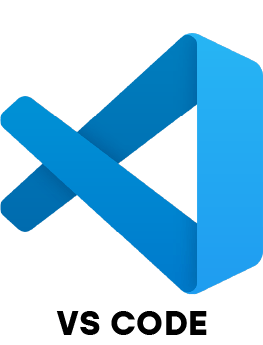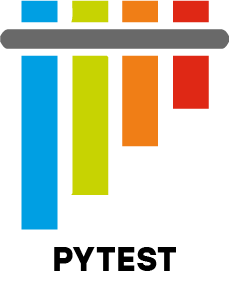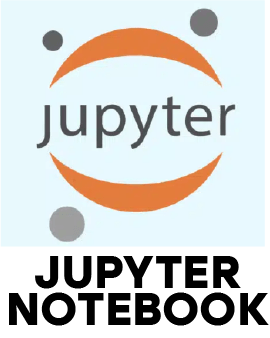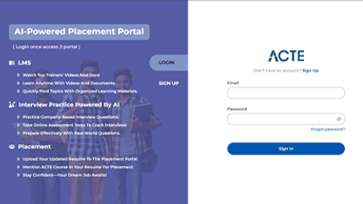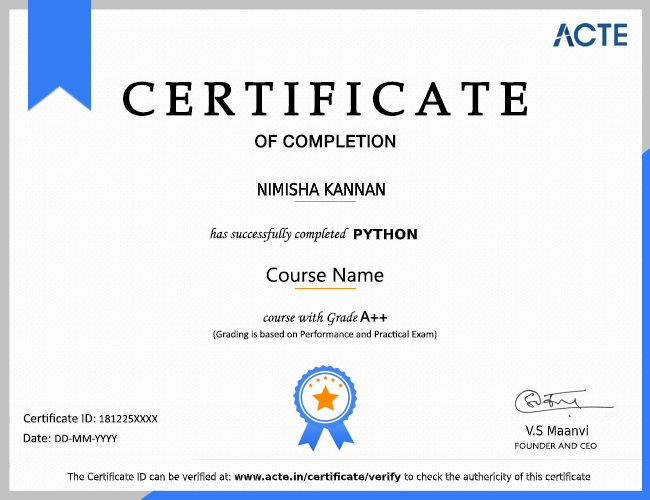Additional Info
Python is a high-ranking, often interpreted language of programming. Python's design philosophy prioritizes code readability, as seen by its extensive use of indentation. Its language features and object-oriented approach are aimed at assisting programmers in writing clear, logical code for both small and large-scale projects. Python is garbage-collected and dynamically typed. It supports several programming paradigms, including (particularly procedural) structured programming, object-focused programming, and functional programming. Because of its extensive standard library, Python is frequently referred to as a "batteries included" language.
Python's concise, easy-to-learn syntax promotes readability, which lowers software maintenance costs. Modules and packages are supported by Python, which facilitates program modularity and code reuse. The Python interpreter and its vast standard library are free to download and distribute in source or binary form for all major platforms.Python is widespread amongst programmers because of the higher efficiency it delivers. The edit-test-debug cycle is very quick because there is no compilation phase.
Python scripts are simple to debug : a bug or poor input will never result in a segmentation fault. Instead, when the interpreter finds a mistake, it throws an exception.
Why did you choose Python?
Hundreds of programming languages are available today, ranging from classics like C and C++ to contemporary additions like Ruby, C#, and Lua, as well as corporate behemoths like Java. It's difficult to decide which language to study.Python is an excellent choice for many programming issues, and it's also a good choice if you're starting to program. Although no one language is suitable for every circumstance, it's a solid choice for many programming problems. Python is used by hundreds of thousands of developers all around the world, and the number is growing every year.
For a variety of reasons, Python continues to draw new users. It's a genuine cross-platform language that works equally well on Windows, Linux/UNIX, Macintosh, and other systems, from supercomputers to mobile phones.It can be used to create tiny apps and fast prototypes, but it also scales well enough to allow for the creation of huge projects. It includes a graphical user interface (GUI) toolkit that is both powerful and simple to use, as well as web development libraries. And, best of all, it's completely free.
Roles & Responsibility of Python :
A typical Python developer writes code, creates apps, and delivers them. Furthermore, the individual is frequently required to debug codes, develop integrable systems, and so on. Although this is true, the tasks and responsibilities of a Python Developer are dependent on the job profile, industry or vertical, and work experience. As a result, we'll break down the jobs and duties into distinct groups. Based on the job profile, below are the tasks and responsibilities of a Python Developer :
1. Web Developer in Python :
- Create logic for the server.
- Develop web frameworks.
- Collaborate with the design team to obtain needs from end-users.
- Create the server-side platform and start deploying apps.
- Tuning, usability, enhancement, and automation are all tasks that should be completed.
- Make reusable codes, for example.
2. Programmer, Software :
- Software development and upkeep.
- Code creation and testing.
- Integrate third-party services into your apps.
- Troubleshoot programs Implement security measures.
- Enhance the functionality of apps.
- Examine requests for feature changes.
3. Engineer additionally for Automation Testing :
- Work on Python learns to approach similar to Pytest, PyUnit, Behave, and lots of others.
- Perform difficult system testing.
- Troubleshoot with regards to each committal to writing problem you're encountering.
- Generate scripts throughout associate degree assessment.
- Produce an automatic framework and conduct A/B testing.
- Work with the event team, for example.
4. Analyst of Data :
- Work on Python libraries such as Matplotlib, NumPy, and Pandas, among others.
- Analyze the information (interpretation).
- Using the scripting language, compile/compile data.
- Investigate data sets.
- Interact with clients.
- Assemble the requirements.
- Tune programs or run queries to improve performance.
- Data from a model to aid reporting (ad-hoc or pre-defined).
- Investigate issues.
5. Data Scientist :
- Check the data Create Machine Learning predictive models (ML) Communicate and recommend answers to troubles with inside the workplace.
- Build statistical studying models.
- Engage with product control and era groups to discover commercial enterprise.
- Tendencies and private answers.
- Keep up with modern technological innovations.
6. Engineer in Machine Learning :
- Analysis of the information statistically.
- Research and adapt Computer Science prototypes help put Artificial Intelligence (ML).
- Algorithms into production.
- Research and install appropriate machine learning algorithms and techniques.
- Develop ML applications through developing a machine learning method. Perform neural network tests.
- Algorithms ought to be quite well dependent on analysis results.
- As needed, train and adapt the machine learning technique.
- Enhance the lifespan of existing machine learning libraries.
- Keep up with the latest artificial intelligence technologies.
Required Skills :
Below is a checklist of some must qualities for Python Engineers :
- Core Object-relation mappers using Python.
- Web frameworks integrating multi-purpose architecture.
- Packaging, dissemination, and deployment software code.
- RESTful APIs visually attractive Scriptwriting.
Tools :
- Editing software :
The majority of your time will be spent writing code in an editor or integrated development environment (IDE). The editor lessons will show you how to choose a text editor and configure it for Python programming.
- Ongoing integration :
The process of integrating code into a common repository many times a day is known as continuous integration. Compiling and integrating software as frequently as feasible helps you to catch issues early and obtain instant feedback on the effects of your modifications.
- Packaging :
The packaging articles will teach you how to establish and maintain Python environments, as well as how to install packages and manage project dependencies.
- Controlling Versions :
Learn how to manage changes to your projects using version control systems like Git.
- Troubleshooting :
Build a solid foundation of debugging tools.
Frame Works :
A full-fledged framework :
A full-stack framework, commonly referenced as an enterprise framework, is a one-stop destination for all development requirements. These come with built-in libraries that also are set up to function together smoothly. Their contributions include database development, frontend interfaces, and backend services.
Microstructure :
Micro frameworks are web application frameworks that are lightweight and minimalistic, with restricted functions and features. Micro frameworks often just provide the components needed to construct an application. A database abstraction layer, form validation, web template engine, authentication capabilities, authorization, input validation, and input cleanliness are just a few of the extra functionalities and features they lack.
Framework for asynchronous communication :
The asynchronous framework is the most recent Python framework to join the fray. It's a one-of-a-kind micro framework that enables developers to manage enormous numbers of concurrent connections. The Asyncio library in Python is used by these frameworks.
Python Modules :
You may bind and reference a module, which is a Python object with arbitrarily named attributes. A module is just a file containing Python code. Functions, classes, and variables can all be defined in a module.
Simply store the code you want in a file with the extension to build a module.
This code should be saved in a file called mymodule.py. Import my module and use the welcome function as follows. This code should be saved in the file mymodule.py. Access the person1 dictionary by importing the module called my module.
Benefits :
The Python language's wide range of applications is due to a mix of qualities that give it an advantage over other programming languages. The following are some of the advantages of Python programming :
1. Third-Party Module Presence :
The Python Package Index (PyPI) has a large number of third-party modules that allow Python to connect with a wide range of other languages and platforms.
2. Comprehensive Support Libraries :
Python comes with a huge standard library that covers internet protocols, string operations, web services tools, and operating system interfaces, among other things. Many common programming tasks have already been programmed into the standard library, greatly reducing the amount of code that has to be created.
3. Open Source and Community Development :
The Python programming language is created under an OSI-approved open source license, making it free to use and distribute for any purpose, including commercial ones. Its development is also fueled by the community, which contributes to its code via organizing conferences and mailing groups, as well as providing support for its various modules.
4. Python's Learning Ease and Support :
Python's readability and clean, simple-to-learn syntax make it easy for newcomers to get started with this programming language. The PEP 8 code style standards give a set of principles to make code formatting easier. Furthermore, a large number of users and active developers has resulted in an extensive online resource bank to aid development.
5. User-friendly Data Structures :
Python comes with built-in list and dictionary data structures that may be used to build quick runtime data structures. Python also has the option of dynamic high-level data type, which cuts down on the amount of support code required.
6. Efficiency and Speed :
Python's clean object-oriented architecture, better process management capabilities, powerful integration, and text processing capabilities, and it's unit testing framework all contribute to the language's increased speed and productivity. Python is seen to be a good choice for creating multi-protocol network applications.
Certifications:
- PCEP (Certified Entry-Level Python Programmer) ENTRY-LEVEL PCEP (Certified Entry-Level Python Programmer) :
The PCEP – Certified Entry-Level Python Programmer certification exemplifies that the individual is aware of basic computer programming concepts including data types, containers, functions, conditions, and loops, as well as the syntax, semantics, and runtime environment of the Python programming language.
- PCAP ASSOCIATE - Python Programming Associate Certification :
The PCAP - Certified Associate in Python Programming certification enhances your programming confidence and helps you stand out in the job market. PCAP certification seems to be supplementary to learning that helps you to even get a head start on preparing for and graduating to the professional level.
- PCPP1 (Certified Professional in Python Programming 1) is a training program for Python programmers :
A PCPP1 (Certified Professional in Python Programming 1) certification validates advanced Python programming skillset. The PCPP1 made recommendations for your programming knowledge and skills in the following areas: Advanced OOP, GUI Programming, Best Practices, and PEP Conventions, Text File Processing, Communicating with a Program's Environment, and Working with RESTful APIs are among the topics covered in this course. It demonstrates that you are committed to your professional growth and allows you to distinguish out with a globally recognized certificate.
- PCPP2 (Certified Professional in Python Programming 2) is perhaps certification for Python programmers :
The PCPP2 (Certified Professional in Python Programming 2) certification recognizes your extensive programming knowledge and expertise in Python and associated technologies. The PCPP2 certification verifies that you are knowledgeable about and skilled in the following areas: Design Patterns, IPC, Network Programming, and Python-MySQL Database Access are among the topics covered in this course. It signifies that you have attained the greatest degree of proficiency and that you are enthusiastic about Python programming.
Pay Scale :
In India, the average pay for an entry-level Python coder is 427K. In India, the average compensation for a mid-level Python coder is 909K. In India, an experienced Python coder earns an average of 150K .



